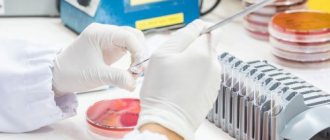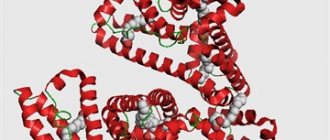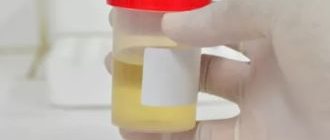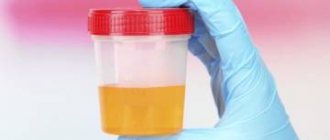For any laboratory tests, it is simply necessary to promptly take a general urine test.
But in order for the results to be correct and without errors, it is worth following some simple recommendations. This test helps identify various diseases and infections that are at different stages, and also shows the overall picture of a person's health. The first thing to do is to carry out thorough hygiene of the genital organs, because otherwise it will be necessary to carry out tests again. For hygiene, you should use special soap products that are sold in cosmetic stores.
The fluid is collected early in the morning: for this you need to prepare an empty vessel, it must be clean and sterile for the results to be accurate. Such dishes can be bought at any pharmacy; they are cheap and easily accessible.
If you are faced with the following question: “How to take a urine test correctly?”, then you should do this carefully.
Namely, we pass the first portion of urine, but we collect the next portion into a vessel. Next, close the lid tightly and take it to the laboratory for research.
Along with the liquid, you must give a direction that will indicate your name, date of issue and what exactly to check.
Preparing for analysis
Many people are interested in how to properly take a urine test and whether preparation is needed.
Following these rules will help increase the reliability of the analysis:
- compliance with the usual drinking regime;
- exclusion from the menu of spicy and salty foods, alcohol and toxic substances;
- avoiding physical overexertion, as this increases the possibility of uncharacteristic changes in metabolic processes;
- refusal to take antibiotics, uroseptics and other drugs;
- container - preference should be given to containers made of darkened glass; a container specially designed for this purpose, which is sold in a pharmacy, is suitable;
- collection time - exclusively in the morning immediately after waking up, at night the functioning of the kidneys changes, the concentration of urine increases;
- careful hygiene before collecting urine;
- An average portion of urine must be collected, 100 ml is sufficient;
- Urine delivery should be carried out no later than 2 hours before delivery; it is not recommended to shake it.
Compliance with these rules allows you to obtain the most accurate information, which will allow you to diagnose diseases in the early stages.
What is urine
Most people are not interested in the complex internal work of the human body and, having set the goal of how to donate urine , let’s first consider the process of its appearance.
In a living organism, the kidneys act as the main organ for excreting waste products. They also try to get rid of unhealthy metabolic products and excess fluid in the body. The liquid part of the blood passes through the renal glomeruli, being intensively filtered and turning into blood plasma.
The latter contains, in addition to products that have passed the final stage of breakdown into simple compounds and energy, also glucose, amino acids and other important nutritional elements for the body. Then the processed plasma descends through channels where water and other useful substances are absorbed into the human body.
Everything that is superfluous and unnecessary goes into the bladder through the ureters. This final fluid is called urine.
Nechiporenko's analysis
If inflammatory processes are suspected, a general urine test according to Nechiporenko is prescribed.
The main difference is that during a conventional analysis, materials that fall within the scope of the microscope are examined, and as part of the Nechiporenko analysis, red blood cells and leukocytes in 1 milliliter are examined. In the latter case, the analysis is more accurate.
When is research required?
Urine is one of the important products of human life. Water is the main component (up to 95-99% of the volume), but in addition to liquid, waste, toxins, and hormones are removed from the body.
Urine analysis is informative and can be prescribed not only during a medical examination, but also:
- to assess the effectiveness of therapy, postoperative condition;
- if you suspect some digestive problems;
- to determine a person’s condition during infections and inflammations;
- when diagnosing possible problems with metabolism;
- find out if there are any problems with the prostate gland or tumors;
- to identify pathologies of the urinary system, kidneys (pyelonephritis), liver, urinary, as well as to evaluate prescribed therapy.
The study helps to identify pathological conditions even before clinical manifestations, i.e. in the early stages, when treatment will be more effective and faster.
Urine analysis according to Zimnitsky
Urine collection according to Zimnitsky should be done at a certain time; the following materials will be needed for analysis:
- 8 identical urine containers;
- a book for keeping records of fluid consumed during the day.
Urine collection is carried out for 24 hours in 8 containers every 3 hours, starting from 9 am on the first day and ending at 6 am the next day. It is recommended to store the collected materials in a closed place in the cold.
During further analysis, the density, volume, and presence of salts in the resulting liquid are taken into account.
Urine collected during the day should dominate over that collected at night, an increase in volume occurs after fluid consumption, density increases when taking diuretics, in diabetes, early gestosis during pregnancy.
Medicines and food
There are several dozen medications known, the use of which can distort the data of various components of urine as a sample for analysis. Among them are:
- Ascorbic acid.
- Chlorpromazine.
- L-dopa.
- Nitrofurantoin (Macrodantin, furadantin).
- Penicillin.
- Phenazopyridine.
- Rifampin (Rifadin).
- Tolbutamide.
This is important to know before collecting urine for analysis. Since other drugs can also change the indicators, it is better to clarify this point with your doctor before taking the test, and if possible, refuse for a while.
Preservatives that are used to prevent the loss of glucose and cells may distort the results of biochemical analysis. The use of preservatives should be avoided whenever possible in any urine test. As for alcohol, the last time it should be taken is 3-4 days before the test.
Urine analysis in children
If urine collection is not difficult for adults, then a similar procedure for an infant can turn into a real problem. This is due to the fact that the process of urination in babies is difficult to control, especially if the child is wearing a diaper.
[ads-pc-2]
So, how to properly take a general urine test in children? When collecting urine from infants, a urinal is used; the technique of collecting urine in this case is greatly simplified. By the way, this is the answer to the question - how to collect urine from a girl
In the case of an adult child, the situation is greatly simplified; it is important to prepare the baby in advance and adjust the diet and drinking habits.
In the morning, the baby must be washed and dried; it is recommended to collect urine in a special container purchased at the pharmacy, which minimizes the likelihood of distorting the results.
How to take a pregnancy test correctly
During pregnancy, constant urine collection and regular visits to the laboratory are necessary in order to promptly identify pathological abnormalities and avoid complications that are dangerous for the fetus and the woman. When pregnancy occurs, the female body changes enormously. Only by passing all the necessary tests can you control this process and keep all indicators normal.
During pregnancy, general urine and blood tests should not have such inclusions as:
- Hemoglobin.
- Leukocytes.
- Protein.
And all indicators should not be higher than normal. If deviations are detected, the woman is admitted to the department for constant monitoring and monitoring of her condition.
Where is the analysis taken?
A general urine test is carried out in a regular clinic at the registration address; it can also be a private clinic. How long does a urine test take?
In large cities there are a large number of private centers where you can get tested at any time, and not just strictly from 8 to 9 am, as in a public hospital.
To carry out the analysis, you must provide a referral from your attending physician. The cost in the latter case may be higher, it all depends on the capabilities and individual preferences of the patient.
Features of collection in men
Our service will select the best urologist for you free of charge when you call our Unified Appointment Center by phone. We will find an experienced doctor near you, and the price will be lower than if you contact the clinic directly.
Immediately before collecting urine for general control, a man needs to toilet his intimate organs with soap and rinse thoroughly under running water. To properly pass urine, you should move the foreskin back a little.
The material must be collected in a sterile container that can be tightly closed. Be sure to attach a direction to the vessel or stick it on the vessel so as not to lose it.
Changing results
Failure to prepare for the test and collect the analysis sometimes leads to distorted results. A general urine test is especially sensitive.
An increased number of microbial cells indicates that the analysis was collected in a non-sterile container. Also, an increase in this indicator is often caused by poor storage and lack of toileting of the external genitalia. Elevated levels indicate an error in the diet.
An increased content of leukocytes and mucus indicates a lack of genital toilet before collecting material.
The presence of a large number of red blood cells, in the absence of clinical symptoms of bleeding, indicates that the collection was carried out during menstruation.
Obtaining unreliable results is also associated with improper storage of the container with the material. At room temperature, microbial agents actively multiply, and you should not expose it to sunlight. The doctor will tell the patient how to collect a urine test.
Collection procedure
To obtain accurate data on the condition of the body, follow simple hygiene rules before collecting urine.
To properly take a urine test, you need to wash yourself thoroughly first (but without using chemicals). Otherwise, the mucus located on the genitals will get into the biomaterial and give an unreliable diagnosis. Girls, in some cases, will need a tampon to prevent this. Urine collection should be carried out in the morning. It is not recommended to use the first portion; it may contain inflammatory components and bacteria in the urinary system. The middle part of the collection is good for analysis. So, what is the correct way to donate urine? First, release a small part of it into the toilet, then, without stopping emptying, place the container. Try not to touch it with your body so that bacterial cells and epithelium do not get into the container. The study requires no more than 60–120 milliliters. Remove the container before urination ends.
Basic blood biochemistry indicators
- Glucose. Indicates the presence and absence of diabetes mellitus. Bilirubin is common, indicating liver problems.
- Urea is an indicator of kidney function.
- Uric acid. Its level can be increased in case of gout, liver diseases, eczema, psoriasis, etc.
- Total protein. May be increased in blood diseases, liver cirrhosis, etc.
- Creatinine is excreted by the kidneys.
- Amylase increases with problems with the pancreas.
- Cholesterol increases with anemia, kidney and thyroid diseases.
Urine standards
What does a good indicator indicate? Firstly, the color of the biomaterial should be transparent, light yellow. Dark with mucus impurities indicates infection, and mucus indicates the presence of leukocytes. Brown indicates liver disease; flakes are a reason to suspect the presence of cystitis. An orange or red tint indicates hepatitis, cirrhosis of the liver, cholestasis. A slightly reddish color is caused by pyelonephritis, inflammation of the kidneys, or the release of pebbles or sand. But a reddish color can indicate more serious ailments - tuberculosis, kidney cancer. Black is a sign of alkaptonuria (a genetically determined metabolic disorder). Gray or white indicate pus or inflammation. After vitamin complexes and medications, the color will turn bright yellow.
Transparent urine without sediment of a light yellow color is an indicator that the body is fine.
There shouldn't be any smell. The smell of ammonia is caused by inflammation; urine in diabetes has an acetone smell.
There should also be no foam, even when shaking. A high level of foam is characteristic of a high protein content or jaundice. This is also noted in severe shocks, impaired brain function and concussion, complications with the heart, metabolism and severe diabetes.
In acidosis, the pH is acidic, and in alkalosis, it is alkaline. There should be no presence of sugar; its excess indicates blood sugar. Ketone bodies indicate impaired metabolism, congestion with fats and carbohydrates. There is no bilirubin in the urine of a healthy person, red blood cells are within 3 in women and 1 in men. White blood cells within 6 in women and 3 in men. Epithelium – up to 10 in the field of view. Flat epithelium will be visible if the rules of general urine analysis are violated. There should be no cylinders, salts or bacteria.
The liquid should be clear, free of red blood cells, salts, and pus.
When examined under a microscope, the following are sometimes found:
- hyaline casts;
- granular and waxy cylinders;
- fungi.
Hyaline casts indicate abnormalities with the kidneys, cardiac organs, and hyperthermia. In rare cases, they are visible after prolonged physical activity, with high blood pressure, or taking diuretics. Granular cylinders confirm pyelonephritis, the viral nature of infections, febrile conditions, and intoxication with lead elements. Wax types show metabolic changes in renal tissues, kidney dysfunction in the chronic phase. In the last stage, they are unable to excrete urine normally.
There shouldn't be any fungus. If it is present, it means that there is thrush on the intimate organs in the body. Fungal infections often occur after long-term use of antibiotics and are a sign of weakened immunity.
Even if the biomaterial data is not in order according to some indicators, the doctor will never make a diagnosis, referring to only one result. He gives directions for blood tests and other studies.
General rules
The properties of urine are influenced by food and medications, and also directly influenced by the time of day: in the morning urine is more concentrated.
The urine test must be taken on an empty stomach. In addition, there are other general rules for collecting urine for general analysis:
- one day before the test, you should remove sweets and fatty foods from your diet;
- refrain from bad habits;
- The material is submitted only on an empty stomach;
- To take the test, you should buy a special container at the pharmacy or prepare a sterile container;
- urine for general analysis should be collected from the middle portion;
- after collecting the material in a container, it should be delivered to the laboratory within several hours;
- The material should be stored for no more than 3 hours in a cool place;
- A general urine test should be accompanied by a doctor's order.
The above general rules should be followed to reduce the risk of unreliable results.
Urine test with doctor's referral











